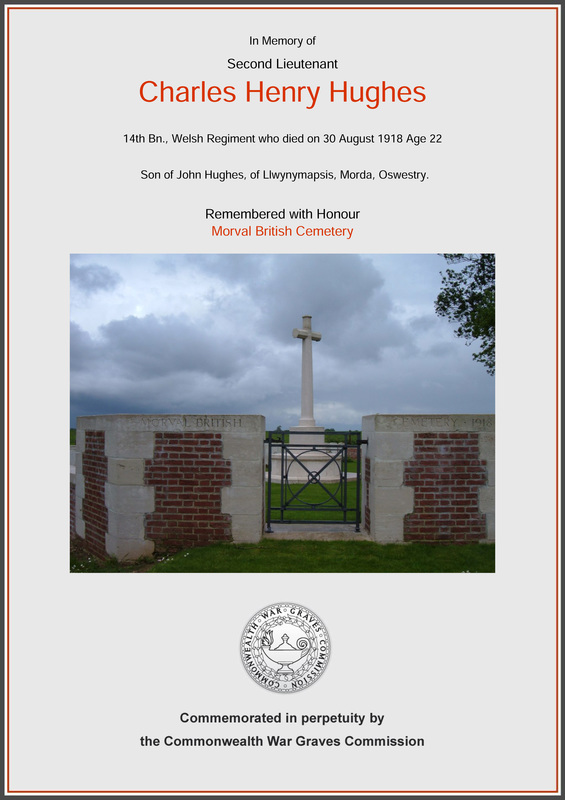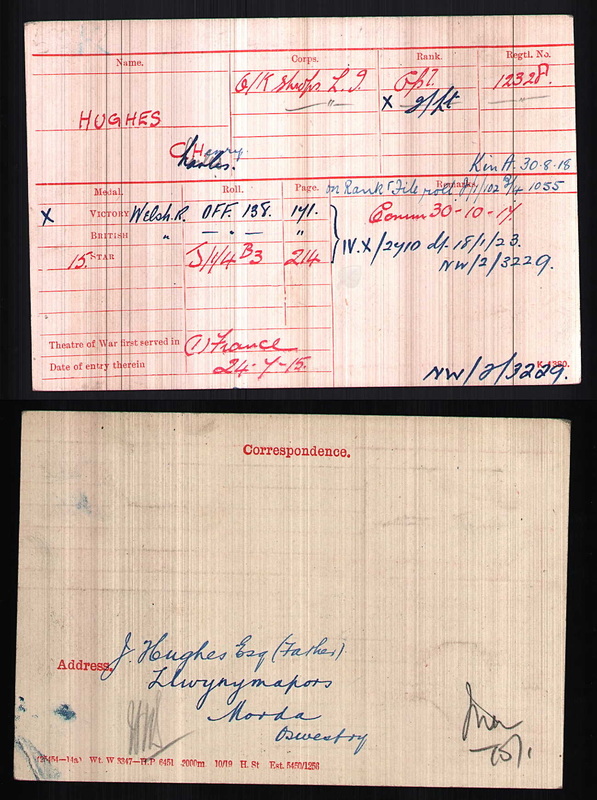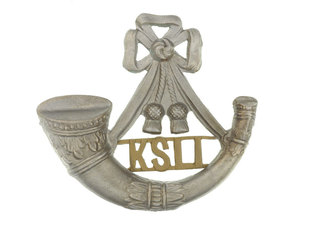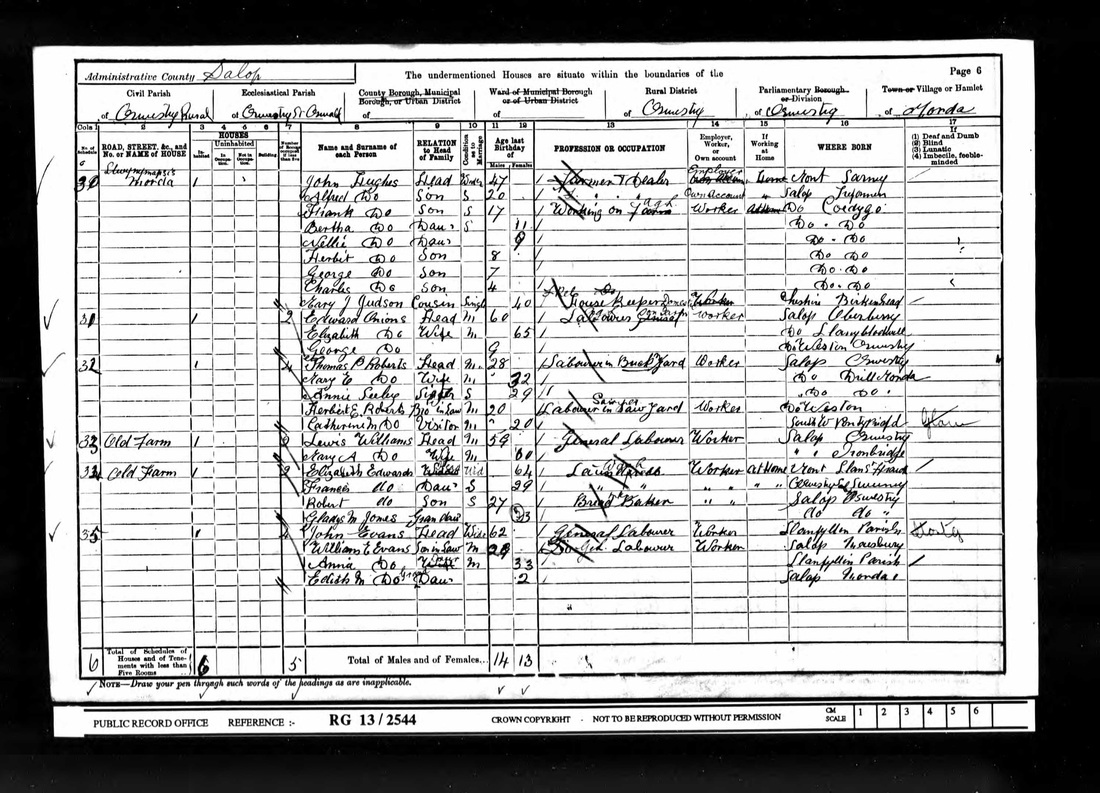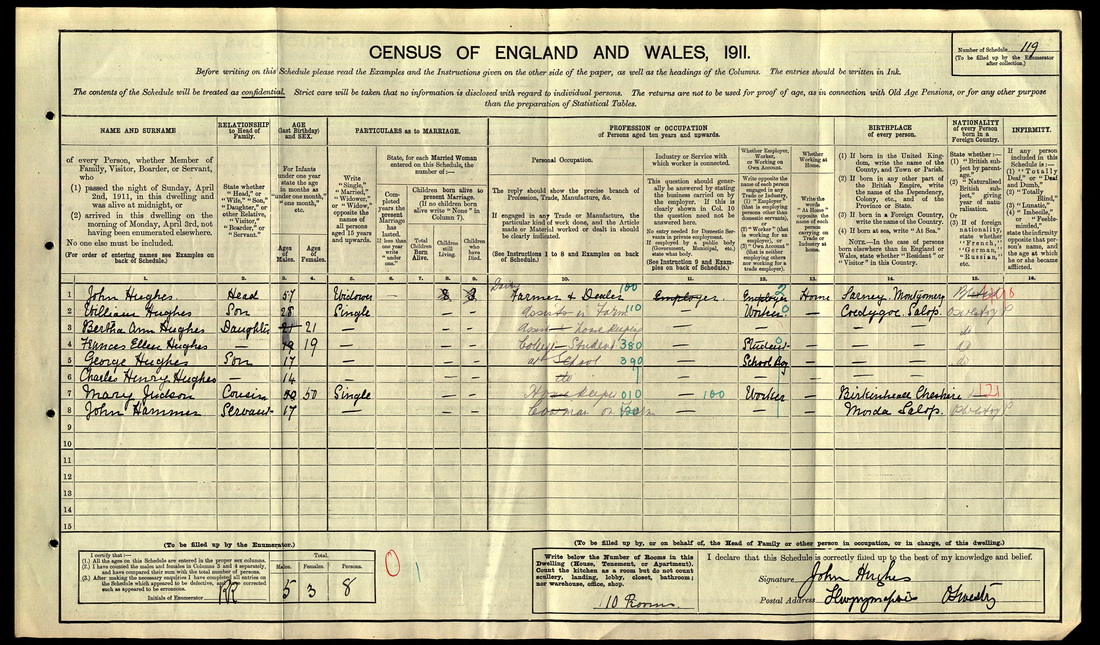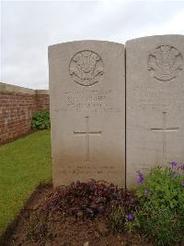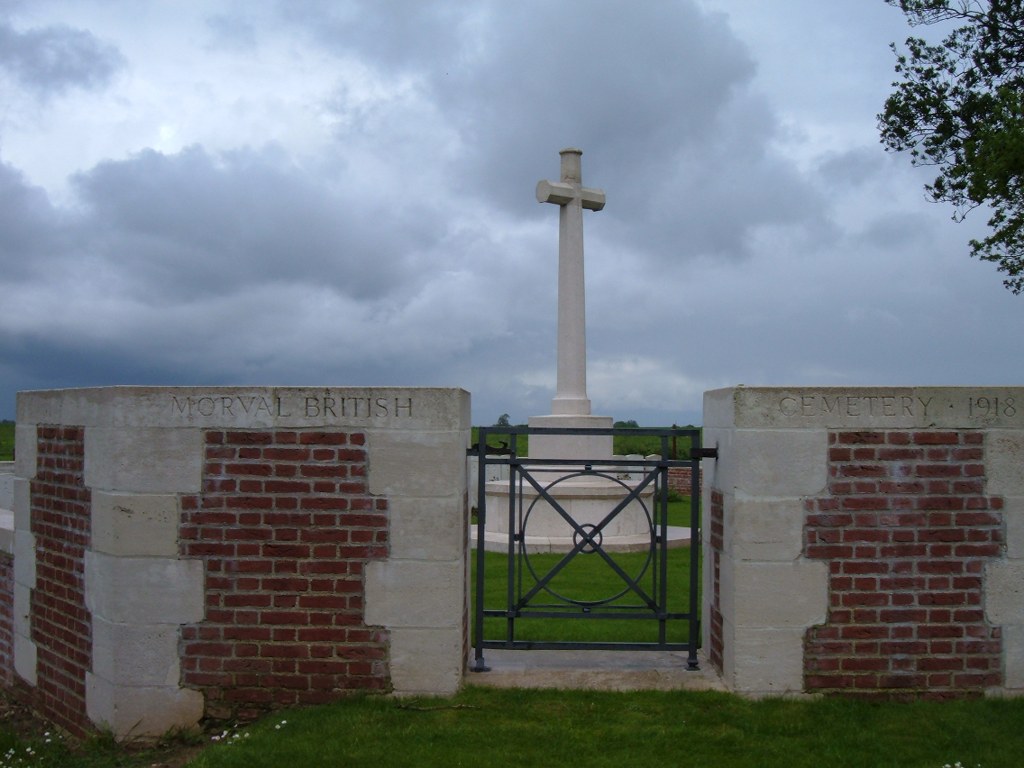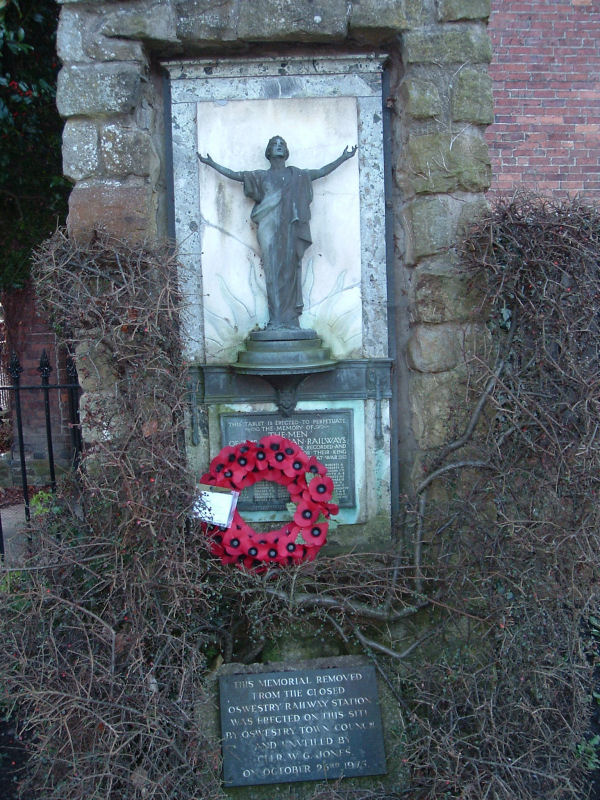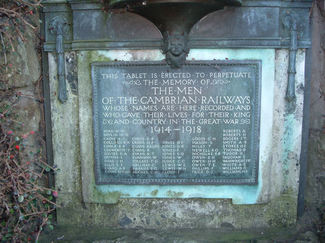Charles Henry Hughes
|
Introduction
Charles Henry Hughes was one of eleven children born to John and Mary Ann Hughes of Llwyn Y Mapsis farm, Morda, nr Oswestry. He was educated at Oswestry Grammar School after which he took up an apprenticeship with the Cambrian Railway as an engineer. At the outbreak of War and like one of his older brothers, George, he enlisted with the "Oswestry Pals" and initially joined the 6th Battalion Kings Shropshire Light Infantry. Another older brother Frank also served in World War 1 winning the Distinguished Conduct Medal. |
Oswestry Pals
In September 1914 the Advertizer ran the headline “Oswestry Pals Recruiting Campaign” This announced that a meeting would be held at the Cross in the town centre in order to attract eligible young men from the ranks of clerks , shop assistants and other professions to sign up with local recruiter Colour Sergeant E J Evans. It was made clear to all attending that volunteers would in all probability be “soldiered together, drilled together, instructed together and trained together”
The appeal was highly successful and on the afternoon of 7th September 1914, 162 young men paraded in front of enthusiastic crowds at Cae Glas Park. Songs were sung and the Deputy Mayor and Lord Harlech addressed the troops before they marched off through cheering crowds to the railway station where they boarded a train to take them to “their destiny” and it is most likely that Charles Henry Hughes was amongst them.
In September 1914 the Advertizer ran the headline “Oswestry Pals Recruiting Campaign” This announced that a meeting would be held at the Cross in the town centre in order to attract eligible young men from the ranks of clerks , shop assistants and other professions to sign up with local recruiter Colour Sergeant E J Evans. It was made clear to all attending that volunteers would in all probability be “soldiered together, drilled together, instructed together and trained together”
The appeal was highly successful and on the afternoon of 7th September 1914, 162 young men paraded in front of enthusiastic crowds at Cae Glas Park. Songs were sung and the Deputy Mayor and Lord Harlech addressed the troops before they marched off through cheering crowds to the railway station where they boarded a train to take them to “their destiny” and it is most likely that Charles Henry Hughes was amongst them.
|
Military Record including Regimental and Battalion Information
Charles signed up as one of the Oswestry Pals at the outbreak of war and was enlisted into the 6th Battalion Kings Shropshire Light Infantry Charles left Oswestry on September 9th 1914. He entered the theatre of war on the 24th of July 1915 as a Corporal aged just 18. He may well have known Private Alfred Griffiths who is also featured on this database as they were in the same Battalion and arrived in France on the same landings. A war-raised Service Battalion, formed in Shrewsbury in September 1914, posted to the 60th Brigade of the 20th Division. The 6th fought at Loos in September 1915, around Ypres in 1916 (where it relieved the 1st Battalion) and then on the Somme, including the capture of Guillemont. It also fought at Langemarck (3rd Ypres) in August 1917 |
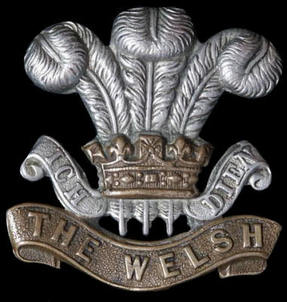
He received his commission in October 1917 and was been posted to the 14th Battalion Welsh Regiment.
The Welsh Regiment had suffered severe casualties in July 1916 on the Somme at Mametz Wood. After this devastating battle they were withdrawn and did not see action again for over twelve months.
In 1917 they were involved in the Third Battle of Ypres before returning to the Somme in 1918
The Welsh Regiment had suffered severe casualties in July 1916 on the Somme at Mametz Wood. After this devastating battle they were withdrawn and did not see action again for over twelve months.
In 1917 they were involved in the Third Battle of Ypres before returning to the Somme in 1918
During August 1918 the 14th Battalion Welsh Regiment were engaged in the fighting in the area around High and Delville Woods and on the 30th August they were ordered forward to take the village of Morval.
At first the attack progressed well but as they approached the village they were met with heavy machine gun fire. Unable to progress further they quickly formed a defensive line.
Their War Diary records that there were heavy casualties, particularly among the officers, one of whom was Charles Hughes. He was killed whilst trying to rescue a fellow officer.
At first the attack progressed well but as they approached the village they were met with heavy machine gun fire. Unable to progress further they quickly formed a defensive line.
Their War Diary records that there were heavy casualties, particularly among the officers, one of whom was Charles Hughes. He was killed whilst trying to rescue a fellow officer.
Census data
|
Memorial and War Grave Information
Second Lieutenant Charles Henry Hughes Welsh Regiment is buried in Morval Cemetery on the Somme in Pas de Calais, France. "Until the Day Dawns and the Shadows Flee Away" are words on Charles's grave. Historical Information Morval was captured by the 5th Division on 25 September 1916, and remained in the hands of the Allies until 24 March 1918 and the German advance. It was regained by the 38th (Welsh) Division, after fierce fighting, on 1 September 1918. The cemetery was made by V Corps in the same month. Morval British Cemetery contains 54 Commonwealth burials of the First World War, one of which is unidentified. All died between 26 August and 6 September 1918. The cemetery was designed by Sir Reginald Blomfield. |
click on the link below for further information
http://www.cwgc.org/find-a-cemetery/cemetery/2076005/MORVAL%20BRITISH%20CEMETERY
http://www.cwgc.org/find-a-cemetery/cemetery/2076005/MORVAL%20BRITISH%20CEMETERY
